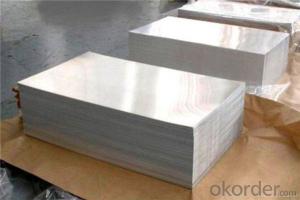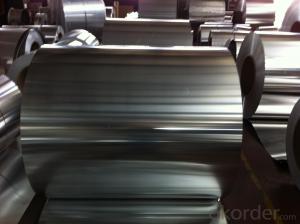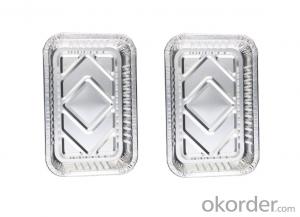Aluminum Sheet 0.5mm/1mm/2mm/3mm with Low Price
- Loading Port:
- Shanghai
- Payment Terms:
- TT or LC
- Min Order Qty:
- 5 m.t.
- Supply Capability:
- 15000 m.t./month
OKorder Service Pledge
OKorder Financial Service
You Might Also Like
Product Description
Descriptions:
Aluminum Sheet & aluminum coils | ||||||
Alloy | Thickness(mm) | Width(mm) | Length(mm) | Temper | DC or CC | |
1050 / 1060 / 1100 / 3003 / 3004 / 3105 / 5052 / 5083 / 5754 / 6061/7075 | 0.2-4.0 | 400-1850 | 500-8000 | O, H12, H22, H14, H24, H16, H26, H18, H32 | DC, CC | |
4.0-150 | 1000-1900 | H112, H111 | DC | |||
8011 | 0.0065-0.2 | 20-1200 | in coil | O, H22 | DC, CC | |
0.08-0.20 | 400-1500 | 500-6000 | O, H12, H22, H14, H24, H16, H26, H18 | DC, CC | ||
MOQ | 1MT | ID | 505mm, 75mm, 150mm etc. | |||
Kind attention | Specifications can be customized as the customer’ s requirements. | |||||
Our Services
Advantages(stainless steel sheet)
1.) Attractive and innovative appearance, rich colors, decorative, flexible combination, can express a different architectural style;
2.) Light weight, high mechanical properties;
3.) Anti-earthquake, fire, rain, long life, no maintenance;
4.) Installation is simple, shorten the construction period;
5.) Environmental protection, etc.
Our company promise
(1): High quality stainless steel with reasonable price.
(2): Wide excellent experiences with after-sale service.
(3): Every process will be checked by responsible QC which insures every product's quality.
(4): Professional packing teams which keep every packing safely.
(5): Trial order can be done in one week.
(6): Samples can be provided as your requirements.
Photos
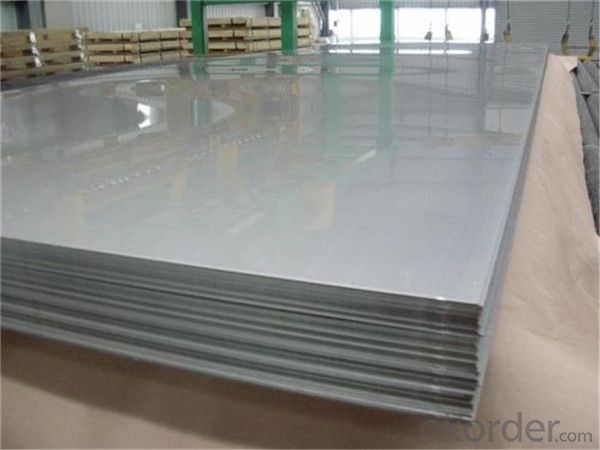
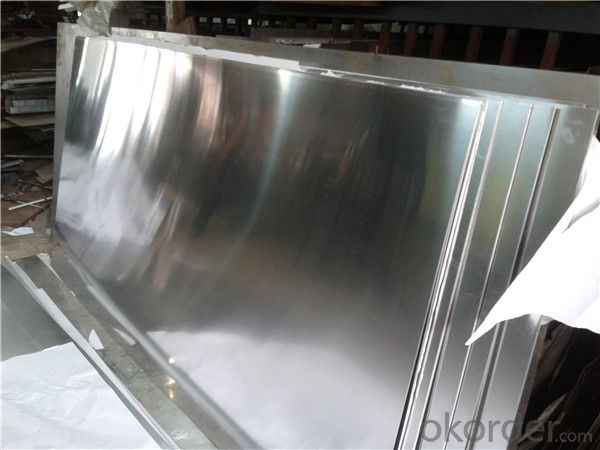
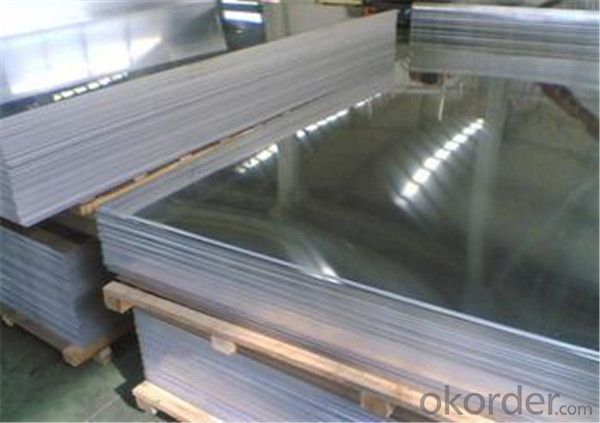
"Uses aluminium is mainly used for high plasticity and good weldability, are also used in vehicle and vessel of sheet metal parts, instruments, lights frame and rivet, metal products, electrical appliances, such as shell. It can also be used in the manufacture of aircraft fuel tank, oil pipe, aerospace aluminum alloy material, is a typical rust proof alloy material.
Hardness: 1060 Aluminum Sheet tensile strength of 110-130, and the 5052 series of tensile strength is reached between 210-230 that is 5052 hardness than 1060 of the hardness of 100%.
Extension rate: 1060 series of extension rate is 5%, and the 5052 series of extension rate reached 12-20%, also can be so that, in the case of 5052 series than 1060 hard 100%, the extension rate is also increased by about 200%.
The difference between aluminum and aluminum plate, aluminum-plastic composite board is after chemical treatment coating aluminum for the surface material, with plastic polyethylene as the core material, in special aluminum-plastic plate production equipment from the processing of composite. The aluminum sheet is made of pure aluminum or aluminum alloy material through the pressure processing (shear or cut) to obtain the cross section of the rectangular, uniform thickness of the rectangular material."
- Q:Are 101 aluminum sheets suitable for chemical processing environments?
- Yes, 101 aluminum sheets are suitable for chemical processing environments. 101 aluminum is a commercially pure aluminum alloy that offers good corrosion resistance and excellent weldability. It is often used in applications where high corrosion resistance is required, such as chemical processing plants. Additionally, 101 aluminum sheets can be further protected by applying a protective coating or anodizing process, which enhances their resistance to chemicals. Overall, 101 aluminum sheets are a suitable choice for chemical processing environments due to their corrosion resistance and ability to withstand exposure to various chemicals.
- Q:What are the different surface finishes available for aluminum sheets?
- Aluminum sheets offer a variety of surface finishes, each with its own unique qualities and aesthetic appeal. Some commonly used finishes include: 1. Mill Finish: This is the most basic finish achieved by leaving the aluminum in its as-rolled state, without any further treatment. It has a smooth and shiny appearance, but may have slight imperfections and is not as durable as other finishes. 2. Anodized Finish: Anodizing is an electrochemical process that creates a protective layer on the surface of the aluminum sheet. This finish enhances corrosion resistance, improves durability, and offers a wide range of color options. Anodized finishes can be matte or glossy. 3. Brushed Finish: By brushing the aluminum sheet with a fine abrasive material, a textured pattern is created. This finish is commonly used for decorative purposes and provides a unique and attractive appearance. 4. Polished Finish: Polishing the aluminum sheet using abrasive materials creates a smooth and reflective surface. This finish is often used for decorative purposes, giving the aluminum a high-end, mirror-like appearance. 5. Embossed Finish: Embossing involves creating raised or recessed patterns on the surface of the aluminum sheet. This finish is commonly used for decorative purposes, adding texture and visual interest to the material. 6. Powder Coated Finish: Powder coating entails applying a dry powder to the aluminum sheet and curing it under heat. This finish provides a durable and weather-resistant coating, available in a wide range of colors and textures. 7. Patterned Finish: Patterned finishes are achieved by imprinting various designs or patterns onto the surface of the aluminum sheet. This finish is often used in architectural applications, adding visual interest to the material. These examples demonstrate the range of surface finishes available for aluminum sheets. The choice of finish depends on the desired appearance, functionality, and application requirements.
- Q:1mm the aluminum plate is pulled to the height of 45mm. Can I pull it out at 1? How much space should I put in?
- The clearance value of the stretched aluminum plate is =1.3~1.4t (first stretch), 1.15~1.2t (second times stretch), and 1.1t (last stretch). The tensile properties of aluminum sheets are inferior to those of low carbon steel, and they are easily broken when stretched. The tensile height 45mm depends on the diameter of the drawing piece. A cylindrical part of a large cross-sectional area from a material to a small cross section is called a tensile coefficient. That is, the ratio of the cross-sectional area to the cross-sectional area before stretching, i.e., m=A0/An-1. For cylindrical parts, m1=d1/D0, the coefficient of the first stretch can be around 0.5, i.e., the diameter after the first stretch is 1/2 of the blank diameter before the drawing. In the future, the tensile coefficients are usually around 0.7~0.8. The calculation of drawing blank, roughly calculate the blank size according to the principle of equal area of the blank before and after the drawing.
- Q:What are the different methods of forming aluminum sheets?
- There are several methods of forming aluminum sheets, each with its own advantages and applications. Here are some of the different methods: 1. Rolling: Rolling is the most common method used to form aluminum sheets. In this process, a large aluminum ingot is passed through a series of rolling mills, which gradually reduce its thickness and increase its length. The ingot is rolled multiple times until the desired thickness is achieved. Rolling can produce aluminum sheets of various thicknesses and widths, making it versatile for different applications. 2. Extrusion: Extrusion is another method used to form aluminum sheets, especially for complex cross-sectional profiles. In this process, a heated aluminum billet is forced through a shaped die, resulting in a continuous length of aluminum with the desired shape. Extrusion allows for the creation of intricate designs and is often used in the production of structural components and frames. 3. Casting: Casting is a method used to form aluminum sheets with a specific shape or pattern. In this process, molten aluminum is poured into a mold and allowed to cool and solidify. The mold can be made of various materials, such as steel or sand, depending on the complexity of the desired shape. Casting is commonly used for decorative purposes and in the production of architectural panels. 4. Stretch forming: Stretch forming is a specialized method used to form aluminum sheets into curved or contoured shapes. In this process, the sheet is clamped at its edges and stretched over a form, using hydraulic or mechanical forces. As the sheet is stretched, it conforms to the shape of the form, resulting in a curved or contoured sheet. Stretch forming is commonly used in the aerospace and automotive industries for components such as fuselage sections and car body panels. 5. Pressing: Pressing, also known as stamping or punching, is a method used to form aluminum sheets into specific shapes or patterns. In this process, the sheet is placed between a die and a punch, and pressure is applied to deform the sheet. The die and punch can have various designs and can create shapes ranging from simple cutouts to intricate patterns. Pressing is commonly used in the manufacturing of automotive parts, appliances, and electronic enclosures. These are just a few of the different methods of forming aluminum sheets. Each method offers unique advantages and is chosen based on the specific requirements of the desired shape, thickness, and application of the aluminum sheet.
- Q:Can aluminum sheets be used for electrical conductors?
- Yes, aluminum sheets can be used for electrical conductors. Aluminum is a good conductor of electricity and is commonly used in various electrical applications such as wiring, cables, and power transmission lines.
- Q:Hi, I'm new here. Yoroshigu.I'm trying to make flash paper for magic tricks.To do that I have to make flash powder but in my location I can hardly find ingredients. Not to think about buying. Usually, I wait for a season and buy firecrackers. Then, I take the power and soak them into the paper and dry. This works but not so flash. Burned more likely.So, I wonder if I take aluminium oxide from aluminium oxide sandpaper and mix with powder from firecracker would produce a brighter flash than firecracker power alone?anyone know please share.
- it will make your penis larger because of the fact it is going to construction up scar tissue. In time you may have a extensive thick cuck and the ladies persons will like it. additionally, you will get such thick skin on it which you are going to have little or no sensation, which ability you may carry on very very nearly without end. the ladies will initiate speaking approximately you and different ladies will want to be sure for themselves. So those physique builders can loaf around with sweaty mens with their toddler oil and their spandex. you would be scoring with a distinctive chick everynight.
- Q:Can the aluminum sheets be used for manufacturing heat shields?
- Yes, aluminum sheets can be used for manufacturing heat shields.
- Q:8mm which type of aluminum plate is suitable for bending?
- How do I calculate the pressure of the seamless steel tube with the outer diameter of 300mm and the thickness of 18mm L=600mm? material
- Q:Are aluminum sheets suitable for water storage applications?
- Indeed, water storage applications can make use of aluminum sheets. Aluminum, being a lightweight and resilient substance, exhibits remarkable resistance towards rust and corrosion. Moreover, it possesses impermeability to water, air, and light, thereby rendering it an optimal selection for water storage. Furthermore, aluminum sheets can effortlessly be molded into diverse dimensions and configurations, enabling the creation of personalized water storage solutions.
- Q:Thickness of Aluminum Foil A rectangular sheet ofaluminum foil is 50 centimeters long and 20 centimeterswide, and weighs 5.4 grams. Find the thicknessof the aluminum foil in centimeters
- density Aluminum 2700 kg/m? Volume = 0.5 x 0.2 x d = 0.1d m? where d is thickness 5.4 g = 0.0054 kg 0.0054 kg / 2700 kg/m? = 2.0e-6 m? 2.0e-6 m? = 0.1d m? d = 2.0 e-5 m or 20 ?m or 0.02 mm or 0.002 cm .
1. Manufacturer Overview |
|
|---|---|
| Location | |
| Year Established | |
| Annual Output Value | |
| Main Markets | |
| Company Certifications | |
2. Manufacturer Certificates |
|
|---|---|
| a) Certification Name | |
| Range | |
| Reference | |
| Validity Period | |
3. Manufacturer Capability |
|
|---|---|
| a)Trade Capacity | |
| Nearest Port | |
| Export Percentage | |
| No.of Employees in Trade Department | |
| Language Spoken: | |
| b)Factory Information | |
| Factory Size: | |
| No. of Production Lines | |
| Contract Manufacturing | |
| Product Price Range | |
Send your message to us
Aluminum Sheet 0.5mm/1mm/2mm/3mm with Low Price
- Loading Port:
- Shanghai
- Payment Terms:
- TT or LC
- Min Order Qty:
- 5 m.t.
- Supply Capability:
- 15000 m.t./month
OKorder Service Pledge
OKorder Financial Service
Similar products
New products
Hot products
Hot Searches
Related keywords
